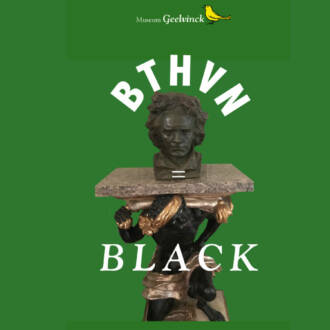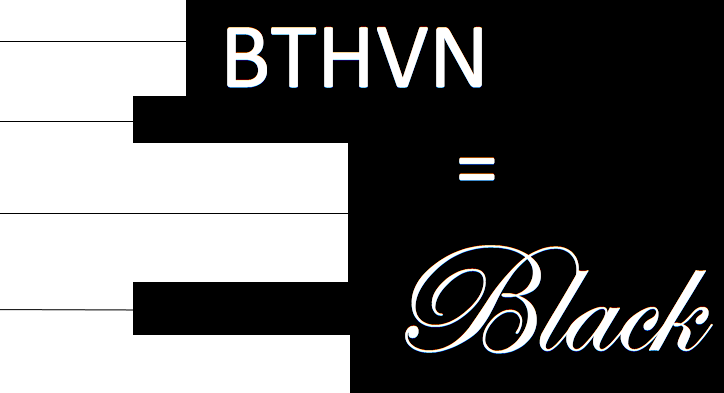Videopodcasts BTHVN = Black series

1. Ronald & Friends go the Beethoven Track
In this episode of ‘Beethoven is Black’, the legendary Surinamese-Dutch musician and composer Ronald Snijders injects tropical swing into classics such as the ‘Ode to Joy’ from Beethoven’s 9th Symphony. He plays together with Brazilian pianist Elizabeth Fadel and Spanish oboist Maripepa Contreras. Beethoven and his contemporaries were great improvisers, and, today, these artists certainly put their own stamp on the classics! The episode will also include a fascinating interview with the trio by Gerda Havertong. An introduction to ‘Beethoven is Black’ will be made by Museum Geelvinck’s director, Jurn Buisman.

2. Beethoven does Double Bass
In this episode of ‘BTHVN = Black’, South African double-bassist James Oesi, and Russian fortepianist Olga Pashchenko will bring a new depth and dynamic to Beethoven’s cello sonata Op.69 No 3 in A major, through the fascinating combination of double bass and early piano. After the concert Gerda Havertong interviews James and Olga: an eye-opener as they share and compare their experiences in becoming professional musicians. Jurn Buisman, director of Museum Geelvinck, opens this episode with an introduction, in which he sheds light on Samuel Coleridge-Taylor (1875-1912), composer of colour, who held the theory that Beethoven could have had African roots.

3 Wim Statius Muller & the Melodies of Curacao
Wim Statius Muller & the Melodies of Curacao “In this episode of BTHVN = Black, Alexander Kraft van Ermel takes us on a journey to the Dutch Antilles with the colorful melodies of his grandfather, the composer and pianist, Wim Statius Muller. Otherwise known as the ‘Chopin of the Antilles’, the music of Wim Statius Muller offers the listener an insight into the rich heritage of Curaçao, a beautiful island in the Caribbean. The joyful music seeks to invite the listener to dance and celebrate life despite the trials of a society corrupted by slavery. Kraft van Ermel, both a pianist and a philosopher, shares stories of these pieces alongside the wonderful melodies of his grandfather and earlier Curaçao composers of color. The episode also includes a fascinating interview with Alexander by Gerda Havertong. This episode starts with an introduction to Chopin within the context of BTHVN = Black by Museum Geelvinck’s director, Jurn Buisman

4 Jazz meets Classics: Delbert & Naomi in the Beethoven Mood
In this episode of BTHVN = Black, saxophonist and Jazz musician Delbert Bernabela (Aruba) and Japanese pianist Naomi Tamura, will seek out the intersection where classical music and Jazz meet and where these genres merge. We will hear how Beethoven, who was himself considered a rebel against musical conventions of the time, has the answers to this exciting fusion. The episode will also include a fascinating interview with Delbert, Naomi and Gerda Havertong. An introduction to the link between BTHVN = Black and our musical heritage will be made by Museum Geelvinck Director, Dr. Jurn Buisman.

5 Beethoven’s Egmont – Ode to Freedom
In this episode of BTHVN = Black, the tragic tale of the freedom fighter Count Egmont, as musically composed by Beethoven, is no better told than by these fantastic artists: Tobias Borsboom and Yukiko Hasegawa on the piano, soprano Meneka Senn and storyteller Simon Mulder. In this concert they bring Egmont’s fight and self-sacrifice against Napoleon to life through song, storytelling and early piano to convey the full emotion of this tale. The episode will also include a fascinating interview with the artists and Gerda Havertong. An introduction to the link between BTHVN = Black and our musical heritage will be made by Museum Geelvinck Director, Dr. Jurn Buisman.

6 ‘The Black Mozart’
In this episode of BTHVN = Black, we hear Mirelys Morgan Verdecia on violin and Artem Belogurv on piano. They will be playing Beethoven, alongside one of his contemporaries: Joseph Boulogne, le Chevalier de Saint-Georges, one of the few 18th-century composers of African descent to appear on the Western Classical music scene. We will also experience the flavours and sounds of Cuba through the Cuban classical composer: José White. The episode will also include a fascinating interview with Mirelys. An introduction to the link between BTHVN = Black and our musical heritage will be made by Museum Geelvinck Director, Dr. Jurn Buisman.

7 Beethoven’s ‘Kreutzer’ Sonata mulattica
In this episode of BTHVN = Black, we will hear the ‘Kreutzer’ Sonata. It was originally written for George Bridgetower, the afro-polish violinist who impressed Beethoven, and named the Sonata mulattica. However, after a quarrel with Beethoven it was instead dedicated to Rudolphe Kreutzer who famously hated the piece! Tolstoy also wrote a novela about the sonata, which has made a name in film history to date. Today this notoriously technical piece will be played by Shuann Chai on piano and Shunske Sato on violin, who will show off this truly Beethovian spectacle! The episode will include a fascinating interview with the artists and Gerda Havertong. There will also be a special interview conducted by Gerda Havertong with Museum Geelvinck Director, Dr. Jurn Buisman, about the connection between the Geelvinck Early Piano Collection and the BTHVN = Black story.

8 Beethoven’s ‘Eroica’
In this episode of BTHVN = Black, we will have the pleasure of hearing the mighty Eroica played for us by none other than Richard Egarr and Alexandra Nepomnyashchaya. The piece was originally dedicated to Napoleon, but Beethoven is alleged to have been so outraged by Napoleon’s self-appointment as Keizer, that he scratched his name from the score, scratching a hole in the page in anger! In this special heritage episode, Gerda Havertong will interview Jorien Jas, curator at the Cannenburch Castle (the Netherlands), about the historic link between slavery and the aristorcracy during the Dutch Golden Age and how this is remembered today.
Starting October 2021, we will publish the eight episodes on a regular basis.
You can choose between the platforms Vimeo and YouTube:
• For Vimeo you can use credit card and Paypal payment.
Please note, that not all smart televisions have Vimeo installed (please check in advance).
• For YouTube you can also use iDeal as payment platform.
You can choose between single episodes or subscription (passepartout) to all eight episodes of the full videopodcast.
The tariff for subscription (passepartout) gives you a reduction of about 50%.
The subscription (passepartout) remains valid till the end of 2022.
For ‘Museumkaart‘ deduction, we request you to have a Dutch ‘Museumkaart 2021’. In that case, please use YouTube only.
We would most appreciate, if you would consider to donate to the preservation of the historic stringed keyboard instruments in the collection of Museum Geelvinck. This way, you support our living musical heritage. Many thanks in advance!










